The landscape of the UK is defined not just by its hills, rivers, woods and farmland, but by its buildings, and none more so than the historic centrepiece of almost every village and small town: the parish church.
Go for a walk in the British countryside and it's likely that you'll come across a rural church. They provide a place to shelter, a chance to learn about the local community and a glimpse into the history of the surrounding landscape.
Atmospheric, beautiful and mysterious, Britain’s rural churches are an extraordinary national treasure.
From towering cathedrals to tiny chapels, here's our expert guide to some of the best country churches to visit in the UK.
Best rural churches in Scotland
Croick Church, Sutherland
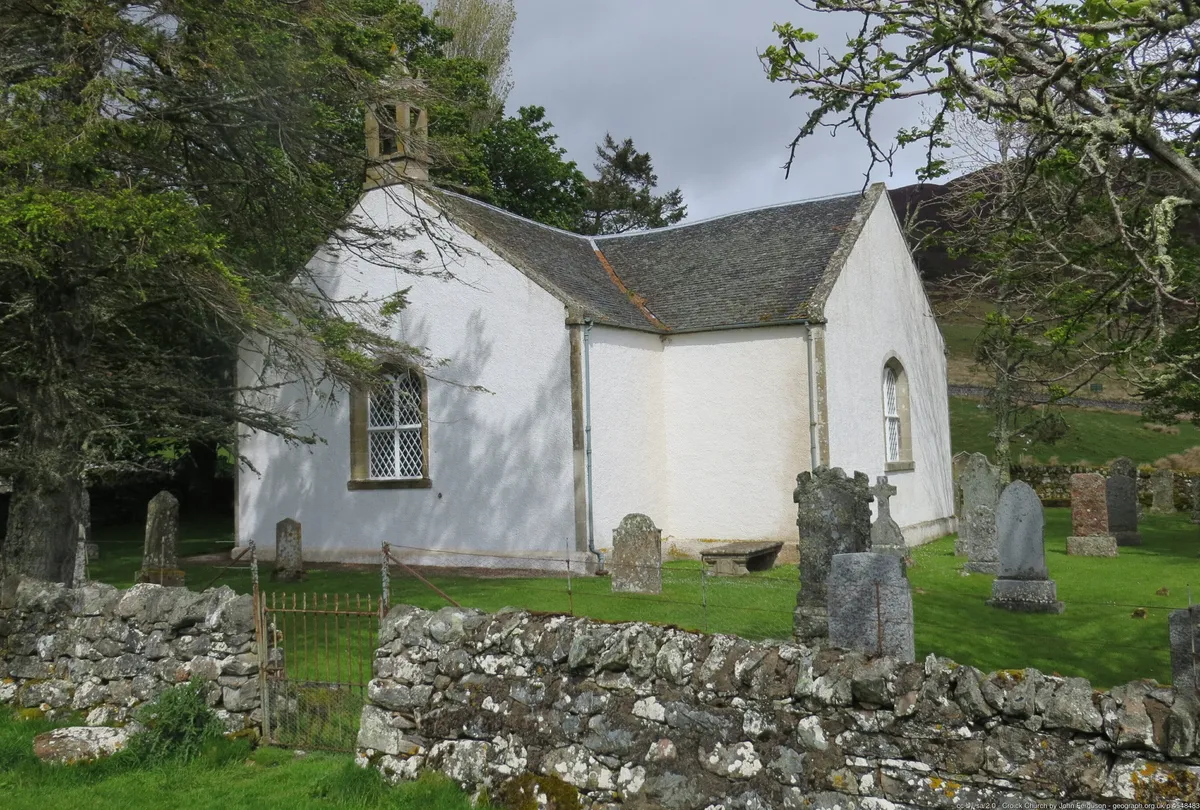
Ten miles up the lonely Strathcarron valley, this humble utilitarian church is forever linked to a group who became refugees in their own land – a fate echoed in the Christmas story. Evicted in 1845 during the notorious Highland Clearances, 80 people lived temporarily in the Croick churchyard. Cryptic reports of their sad story were later etched on the church windows by unknown hands.
St Mary and St Finnan, Glenfinnan, Highland

Gothic in style, the Church of St Mary and St Finnan stands like a stoical watchman over the mountain-flanked waters of Loch Shiel, surely one of Britain’s most enchanting landscapes.
In autumn and winter, as day breaks from a cloudless night, the glen is particularly magical. Frost envelops everything: the pine trees, the mountain ridges, the church’s pitched roof. It dusts frozen puddles, crunches beneath feet and petrifies plants.
Seek refuge from the cold inside the church then venture into the Highlands on a walk past the wizards’ railway to a lonely mountain pass.
Crathie Kirk Church, Aberdeenshire

Built from local granite with a Scots pine roof, Crathie Kirk may look humble but – being down the road from Balmoral Castle – it has been a place of worship and solace for British royalty for more than 150 years. A neat Gothic church with a square tower, the kirk sits on a hill overlooking the River Dee and is full of fascinating royal history, including windows donated by Queen Victoria.
Best rural churches in Wales
St Cwyfan’s Church-in-the-Sea, Anglesey
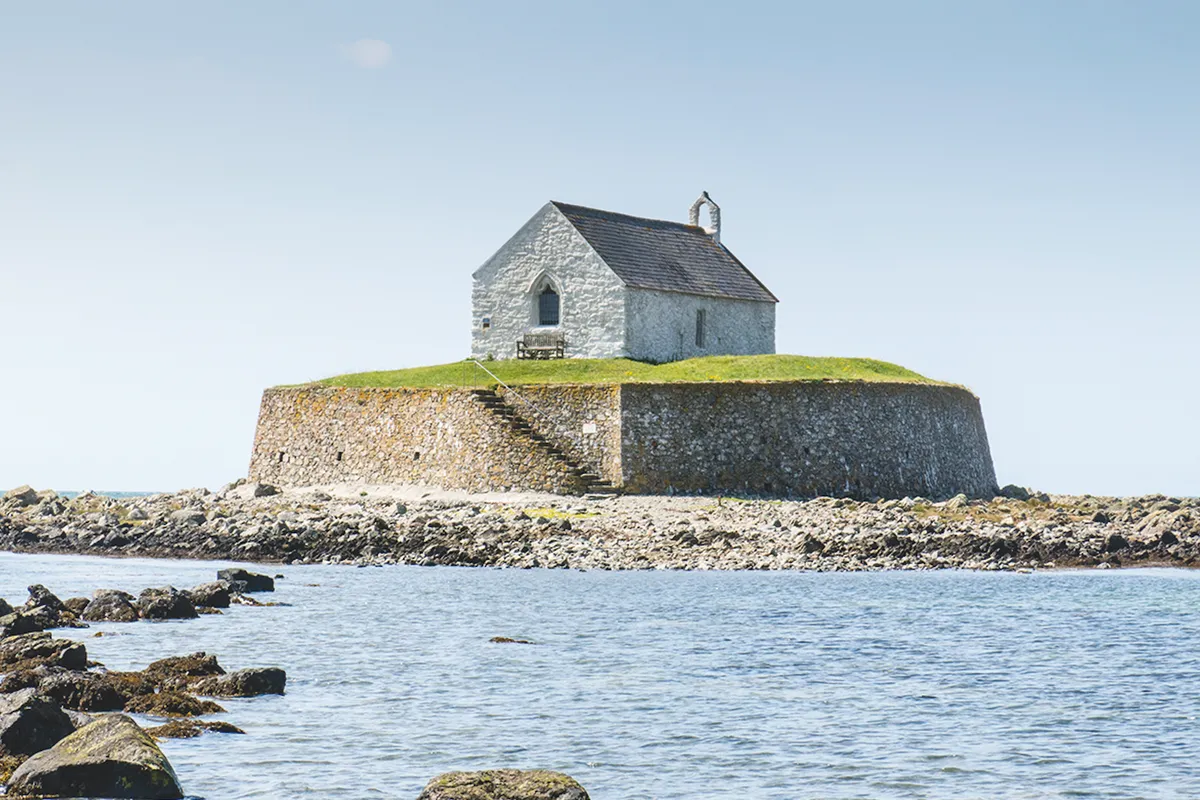
An intriguing stone rubble, single-cell parish church set on a tiny islet restricted to its churchyard, now revetted by a dramatic, high stone wall. Parts of the building may date from the 12th century.
Church of the Holy Cross, Mwnt, Ceredigion
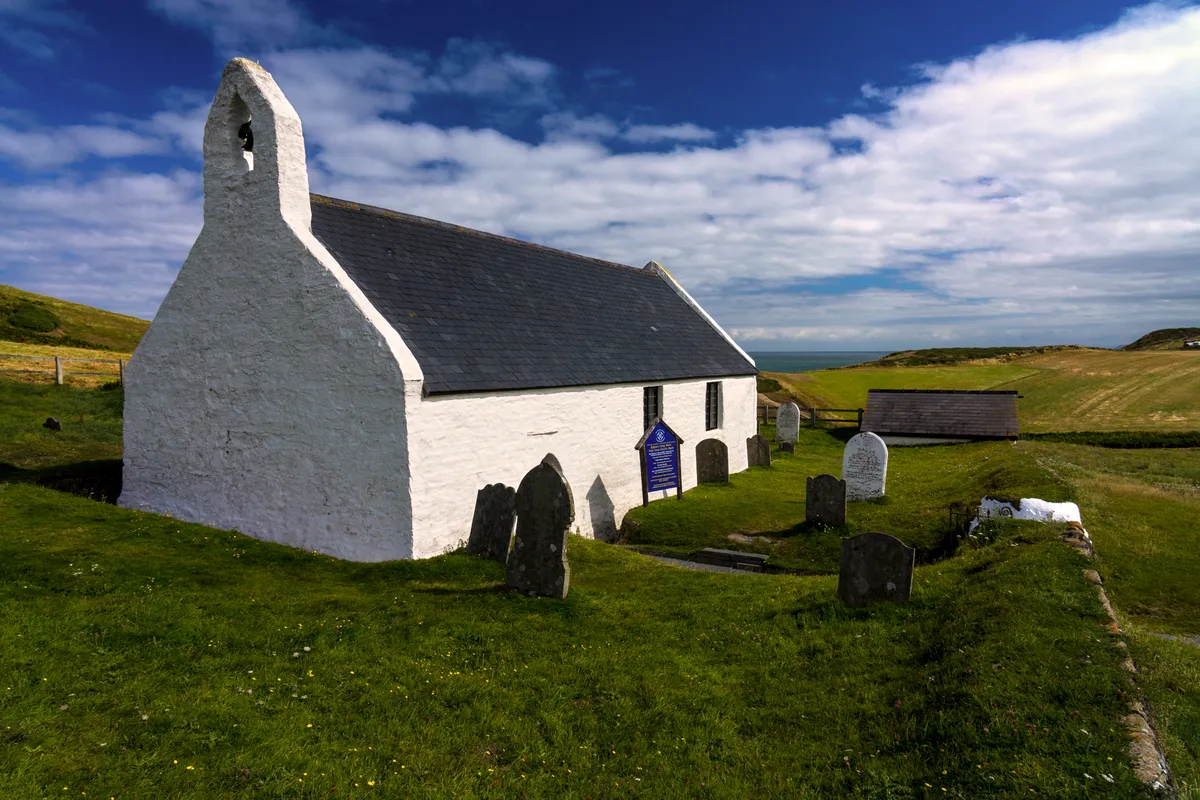
Sheltering from brutal south-westerlies beneath Foel-y-Mwnt hill is Eglwys y Grog, the Church of the Holy Cross. That it’s dedicated to a cross rather than a saint suggests antiquity. It’s possible that a stone cross once stood on Foel-y-Mwnt in the 5th or 6th century.
It would have been clearly visible to the early Christians who travelled here in small wooden boats in search of wilderness and solitude, many of whom went on to found churches that bore their own names.
St Tanwg Church, Gwynedd

‘The church in the sand’ in Llandanwg lies to the south of Harlech Castle and overlooks Cardigan Bay. A Grade I-listed building, this bleakly beautiful medieval church is just 20m from the high-water mark and features large whitewashed walls. Look for the 6th-century gravestone embedded in the south sanctuary window.
Eglwys Sant Rhychwyn, Llanrhychwyn, Conwy
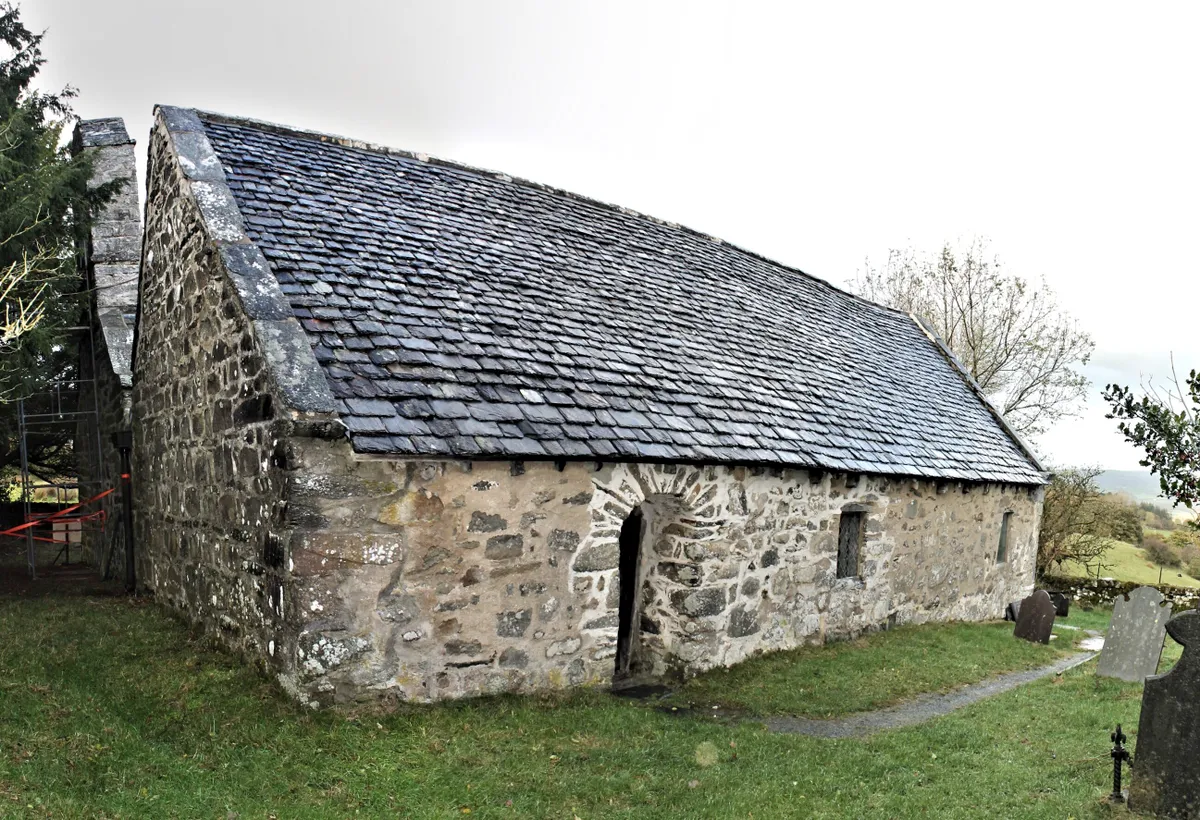
The oldest surviving church in Wales, St Rhychwyn's Church, Llanrhychwyn, sits shyly behind a screen of trees in a farmer’s field. Services here are rare, but everyone is welcome on the second Sunday in December for carol singing. Check out one of the south-aisle windows: it contains the oldest glass in the Principality.
Church of St Issui, Partrishow, near Abergavenny, Powys
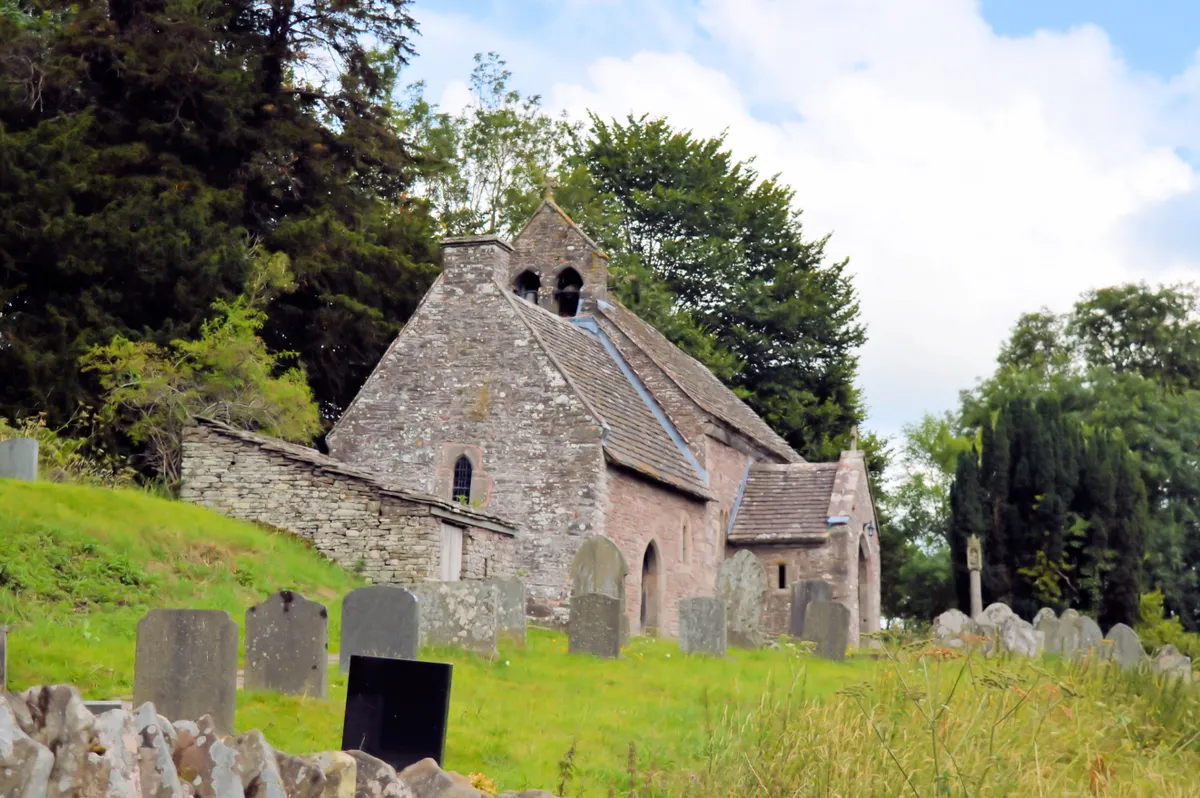
Several country miles across rolling hills will bring you to the small Church of St Issui in the southern Brecon Beacons National Park. The site is idyllic, close to a holy well, and with its own stable in the churchyard. Inside you will find one of Britain’s oldest fonts and one of the most intricately carved medieval wooden screens in Britain.
Llangelynin Old Church, Conwy
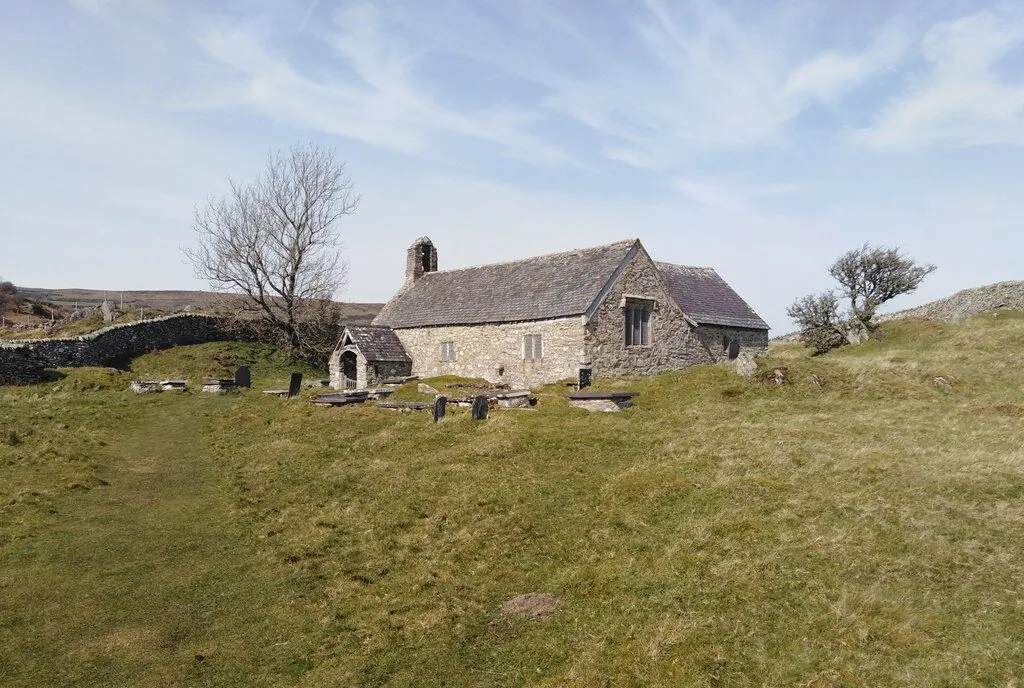
Solitude is more or less guaranteed at the remote church of Llangelynin in North Wales. It is a small, unspoilt medieval church with a holy well in the churchyard, set in an upland landscape of drystone field walls. The interior was spared the excesses of Victorian restorers and has a 16th-century oak roof and painted Welsh texts on the walls.
Best rural churches in Northern Ireland
Saul Church, County Down
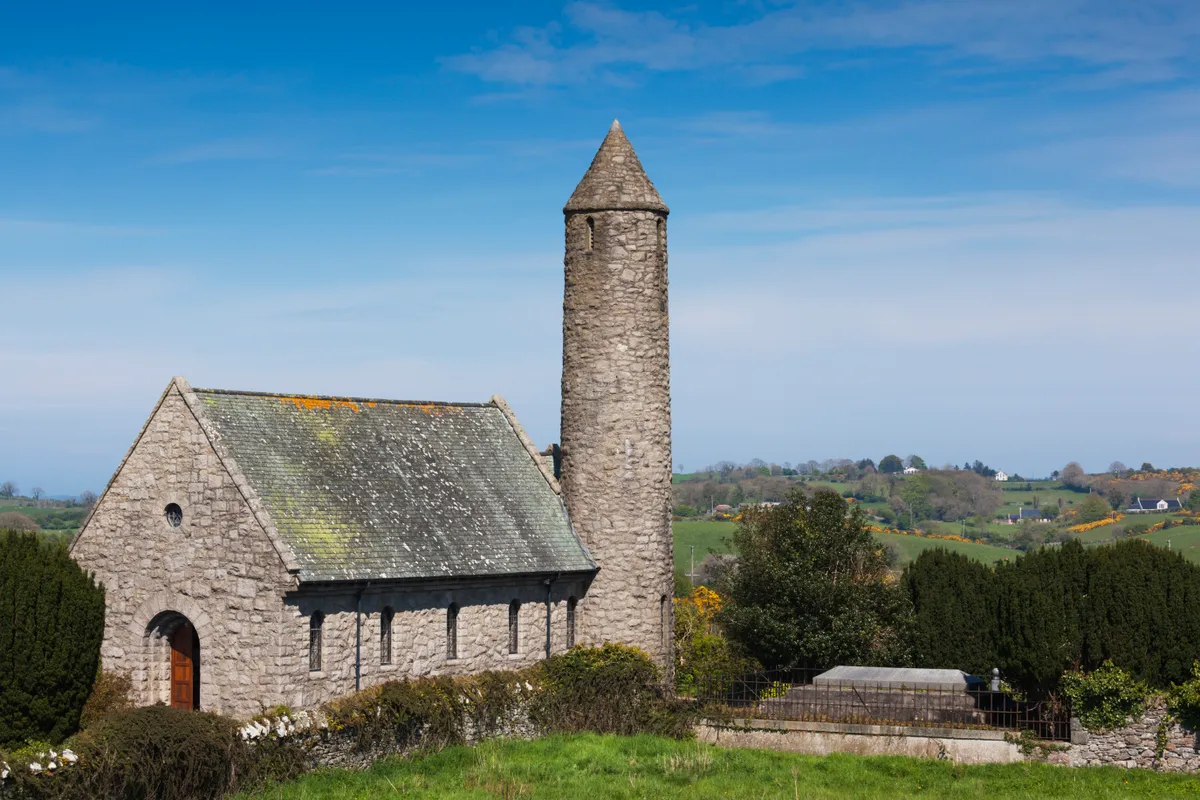
Saul church is a 1932 replica of an earlier church with a round tower that stood on this important Christian site. For it was here that St Patrick is said to have made his first landfall on Irish shores in 432 and where he died 29 years later. It’s two miles outside Downpatrick, tucked away in the southwest of Strangford Lough.
Best rural churches in England
St Martin’s Church, Wiltshire
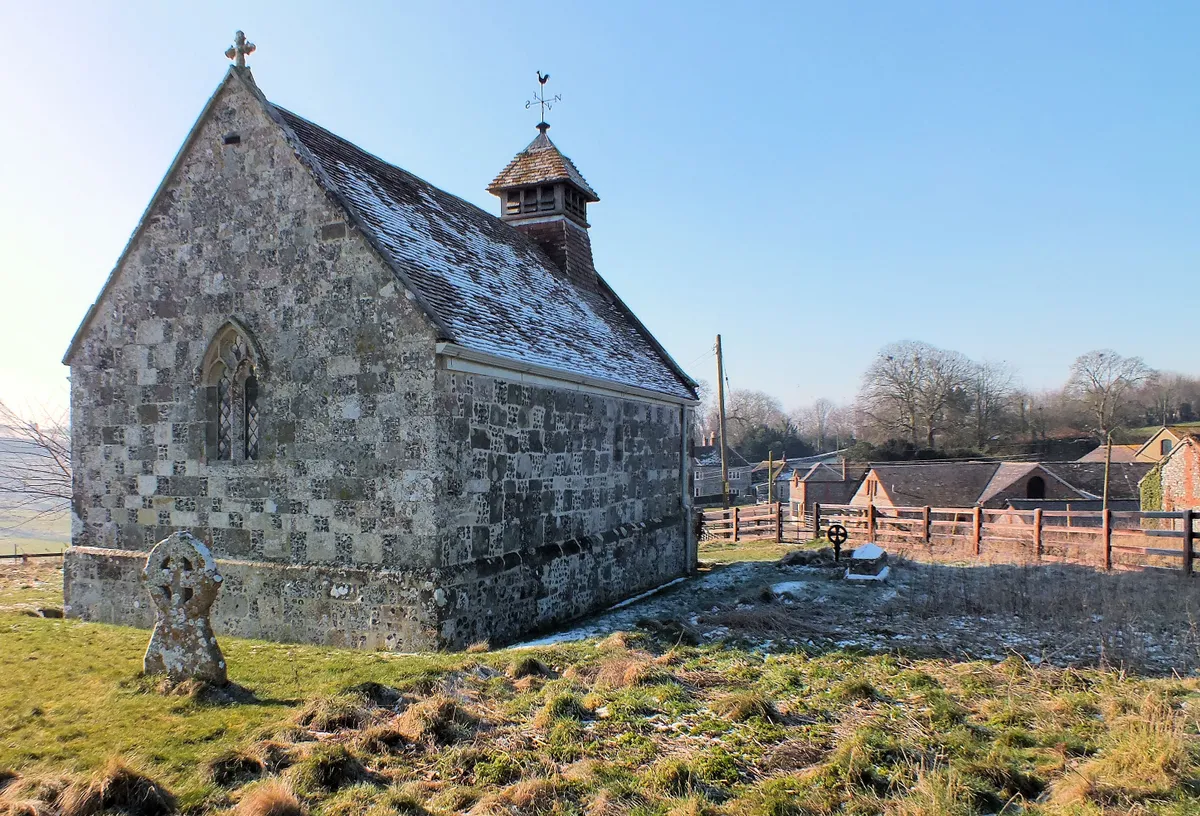
The village of Fifield Bavant is the smallest in Wiltshire with just two houses and 10 cottages, while the adult population of 19 is just one more than was recorded in the Domesday Book in 1086. This fine church boasts original stone and flint checkerboard walls and a Norman font.
Church of the Good Shepherd, Lullington, East Sussex

This 16-foot-square 13th-century church with its white weather-boarded belfry is the smallest in Sussex, seating only 20. The building is the remains of the chancel of a much larger church that was destroyed by fire, probably in the time of Oliver Cromwell. It was rededicated to The Good Shepherd in 2000.
St Peter’s, Besford, Worcestershire

This predominantly 14th-century church features a stone chancel and 15th-century timber-framed nave. The latter is the only example in Worcestershire.
St Thomas’s Church, Lancashire

St Thomas’s Church was strategically positioned to glower upon Mellor’s village brethren who ascended a wearying path to worship. The font is possibly from the first millennium, carved with figures on horseback, possibly with Viking influences. The pulpit is 700 years old and tilts like the Leaning Tower of Pisa, all but falling into the lap of the congregation.
Old Church of St Lawrence, Isle of Wight

To find this tiny Grade II-listed 13th-century church, you must follow a narrow, wooded alleyway off the Undercliff, a road closed to cars due to landslip. Originally just 20ft long and 12ft wide, it was considered the smallest church in England. The exquisite interior features a 15th-century baptismal font and 18th-century coat pegs.
Church of St Mary and St David, Kilpeck, Herefordshire

From a distance Kilpeck looks like a humble village church, but it was built in the 1130s as a private chapel and has some of the most sophisticated decoration in a 12th-century English church. Much of it was inspired by churches in France and Italy seen on pilgrimages to Rome and Compostella.
St Margaret’s, Hales, Norfolk

Norfolk a county of flint walls and round towers. The small 12th-century church of Hales displays both to good effect, and also has a traditional thatch roof. The most richly treated part of the building is the 12th-century doorway. The interior is unspoiled, with medieval wall paintings and font. Cared for by the Churches Conservation Trust.
Church of the Holy Ghost, Crowcombe, Somerset

Nestled down at the foot of the Quantock Hills in Somerset is Crowcombe, a village with a Church House built in 1515, forerunner of the familiar church hall. In the sixteenth century benches were added inside the church for the congregation, the ends of which have rich and often mysterious carving, including two naked men fighting a double-headed wyvern.
Holy Trinity, Blythburgh, Suffolk

Blythburgh church is a Suffolk landmark, one of many churches built on the profits of the medieval cloth trade. The large, airy interior of this medieval church is characteristic of East Anglia, but its main treasures are in the woodwork: carved scenes on its bench ends and a beautiful roof adorned with angels.
Church of St Mary, Long Sutton, Lincolnshire
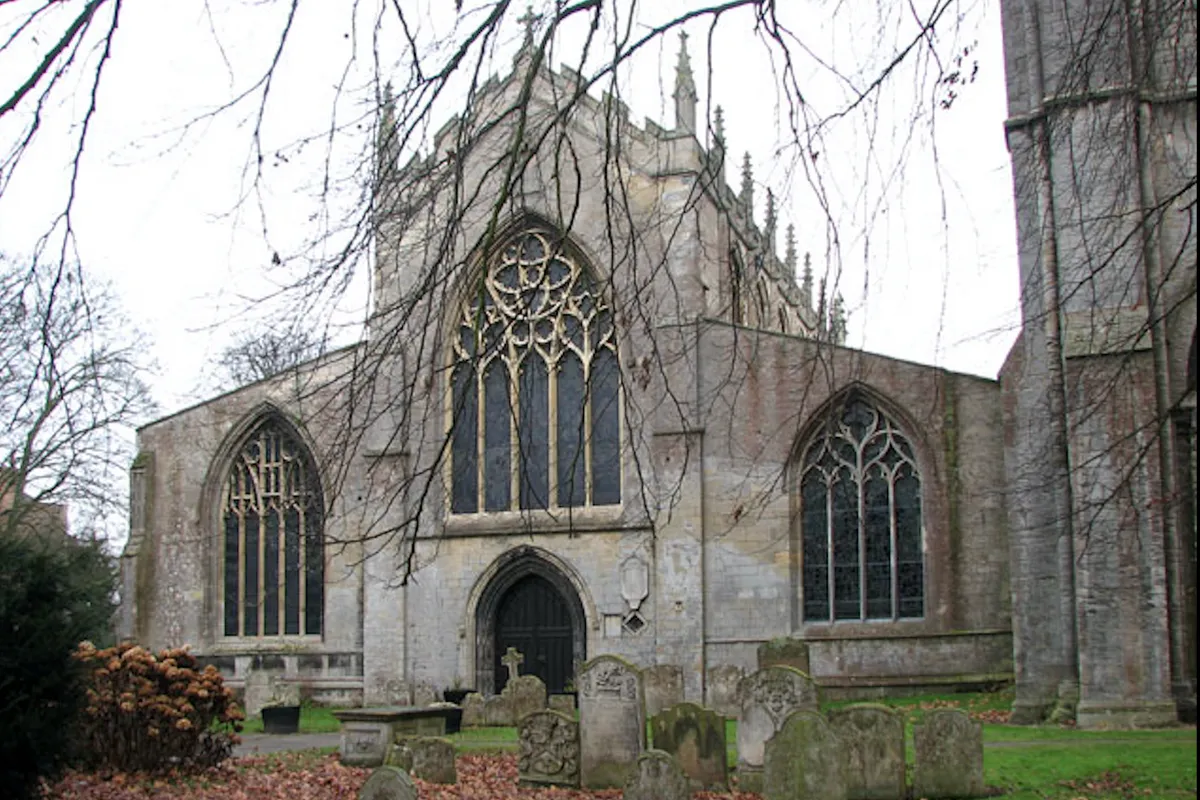
Lincolnshire is a county of large churches and at Long Sutton is one of its finest. The core of a large twelfth-century church survives, which is best appreciated inside the building, but the church also has one of the oldest wooden spires in England, built in the thirteenth century and covered in lead sheets.
St Mary the Virgin church in Cavendish, Suffolk/Essex
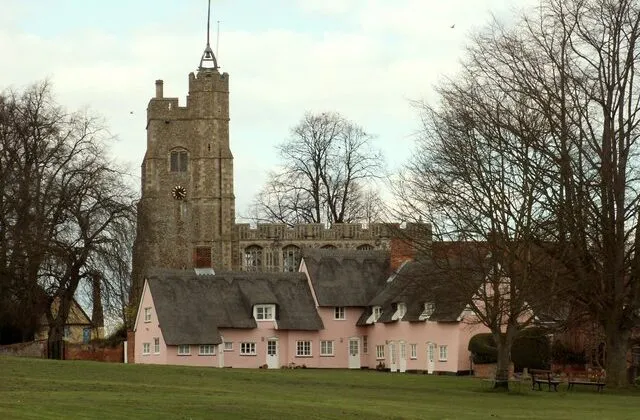
Unusually, the St Mary the Virgin church tower has a chimney, which serves the fireplace in the priest’s room. Inside, note the striking 16th-century Flemish alabaster of the crucifixion, with gilded reredos and the poignant wooden crosses, 13 of them, each a temporary marker for parish residents who perished on the battlefields of the First World War. Look out, too, for the memorial to former residents, husband and wife Leonard Cheshire and Sue Ryder, both now known for their eponymous charities.
St Catherine’s Oratory, Isle of Wight

Some 700 years ago, it is said, the opportunistic Lord Walter de Godeton found a shipwreck off his land, and duly helped himself to the casks of wine on board.But what he didn’t realise was that the wine belonged to the Church.
As penance, Lord Walter was ordered to build a lighthouse above the wreck on the site of an oratory: a small chapel not connected to a parish church dedicated for prayer and celebrating Mass.
St John the Baptist, Tideswell, Derbyshire
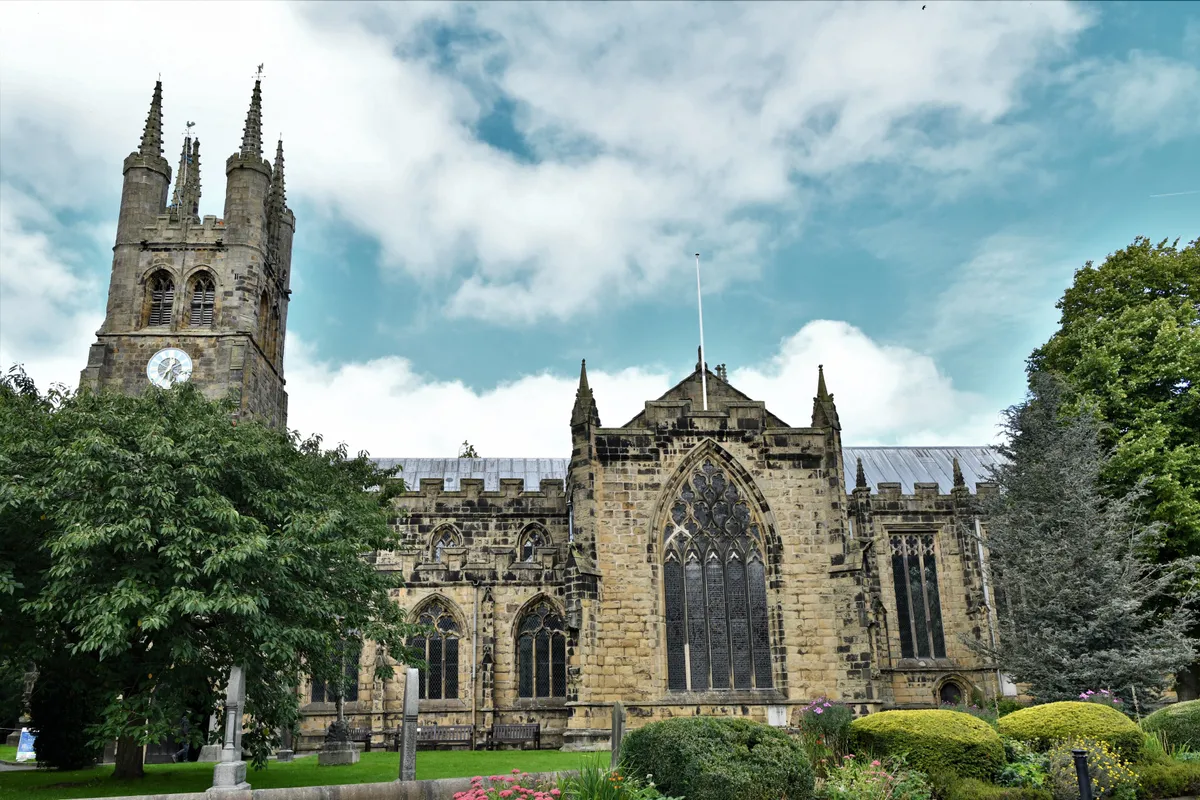
The first snow of winter adds a frosty patina to Tideswell’s pinnacled 14th-century parish church of St John the Baptist, affectionately known as the ‘Cathedral of the Peak’. Take a winter wander from Tideswell’s church into the depths of Miller’s Dale and Monk’s Dale in the Peak District National Park.
Holy Trinity Church, Chapel Stile, Cumbria
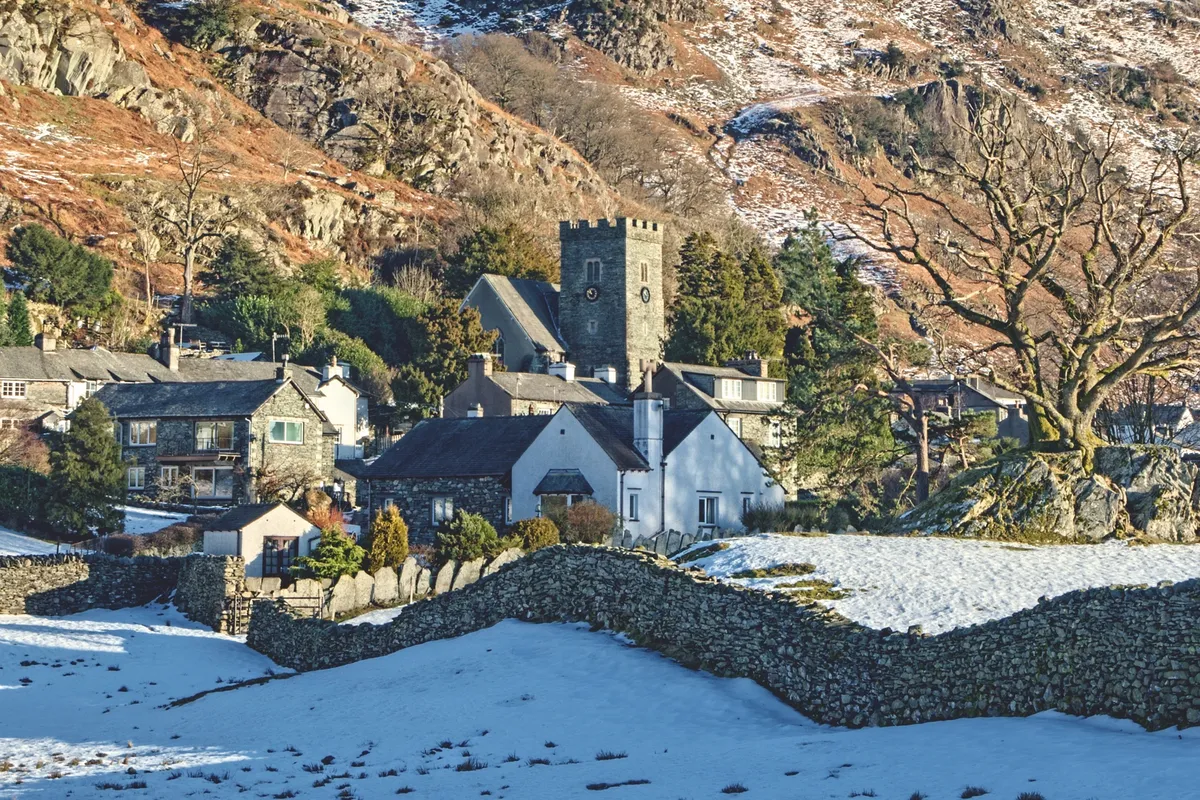
Perched at the mouth of Great Langdale in the midst of the Lake District is Chapel Stile, a small community of blue-grey stone buildings, raised from the slate quarries that surround it.
On a rocky shelf overlooking the village is Holy Trinity Church, completed in 1858 on a site that has seen Christian worship for centuries. Like much of the village, the neo-Gothic-style building is made of local slate, giving the place a distinctly North-Wales flavour.
Heptonstall, West Yorkshire
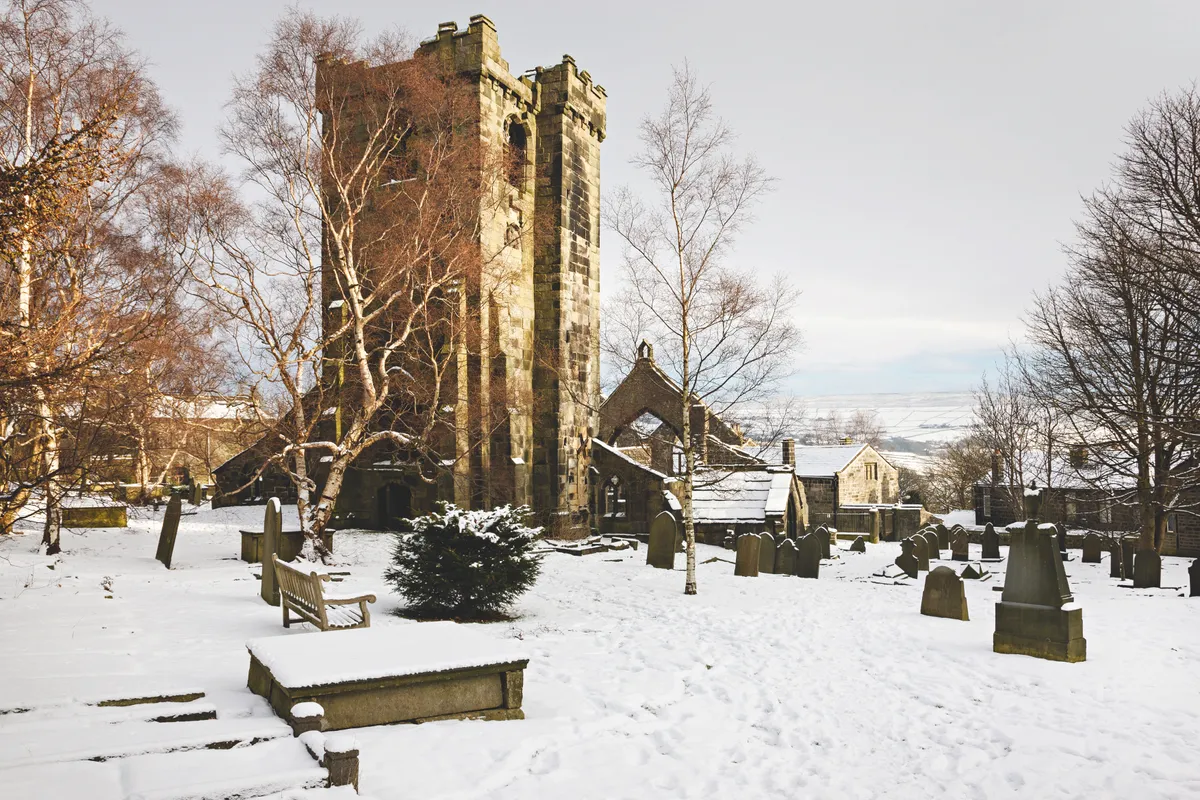
Sylvia Plath, the celebrated American poet and novelist, is buried in Heptonstall's lonely West Yorkshire graveyard. She was married to Poet Laureate Ted Hughes, who was born in nearby Mytholmroyd and lived in Hebden Bridge. The churchyard is the focal point of the village and holds both the skeletal remains of the 13th-century St Thomas a’ Becket church along with its Victorian replacement St Thomas the Apostle.
St Michael de Rupe, Brentor, Devon

Built 335 metres above sea level on the remains of an ancient volcano in Devon is St Michael de Rupe (St Michael of the Rock).
The views across the surrounding Dartmoor countryside from the summit of Brentor are breathtaking, but perhaps what’s most captivating about this small church is its ability to command attention from both land and sea.
Salisbury Cathedral, Wiltshire
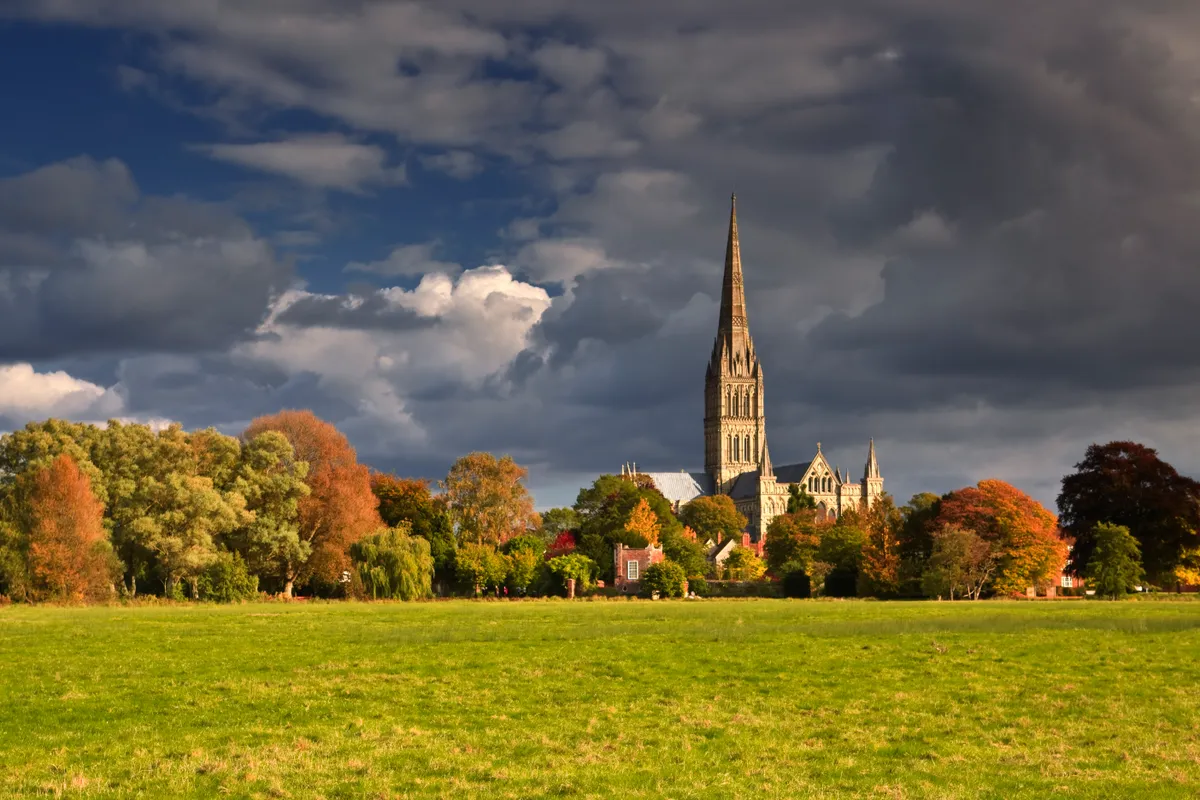
Salisbury is technically a city, but its diminutive size makes access the the countryside easy. The 34-mile Avon Valley Path runs north to south from the Cathedral city of Salisbury along the border of the New Forest National Park to Christchurch on the south coast. Walk a small section of this historic waymarked path, or take on the whole lot over several days.
Chapel of Our Lady of the Crag, Knaresborough, Yorkshire

Carved from a sandstone rock in 1408 by a man called John the Mason, this Marian shrine was once a popular pilgrimage halt on the way to Knaresborough Priory. The priory fell victim to Henry VIII’s dissolution of the monasteries but the charming little chapel survived.
Church of St Beuno, Culbone, Somerset
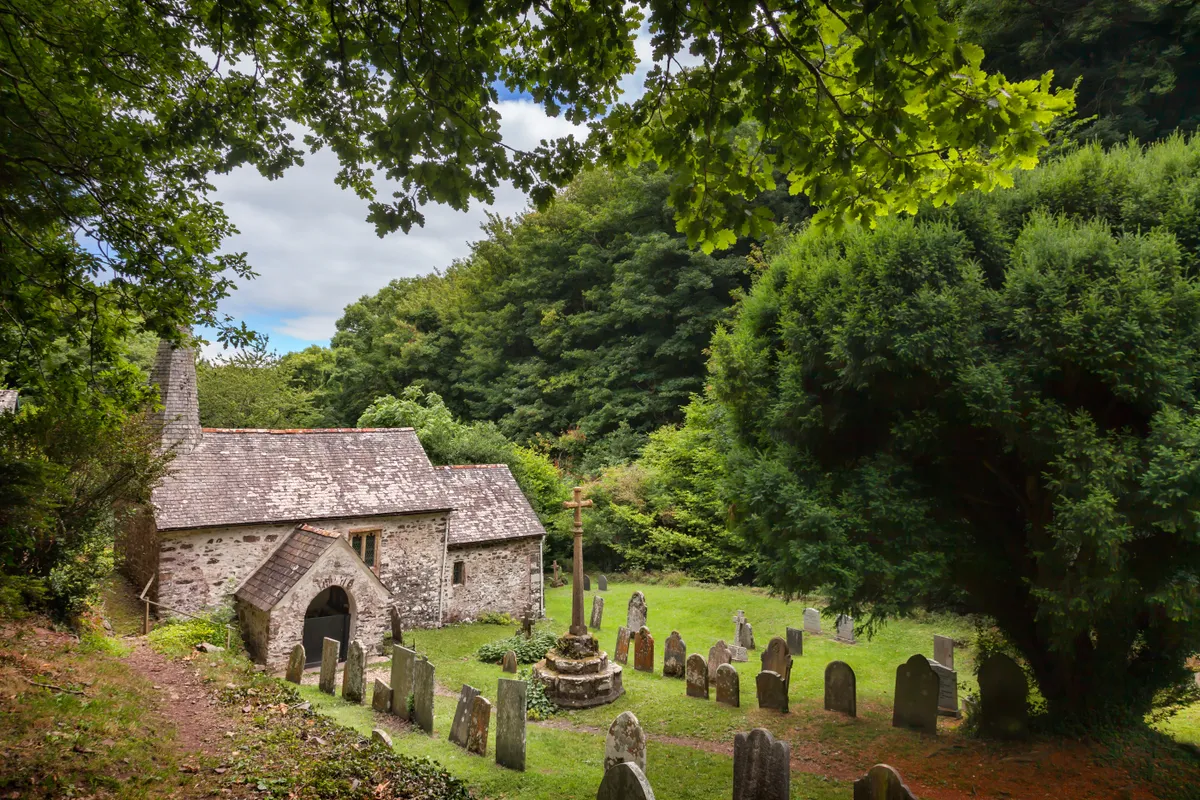
Deep in Lorna Doone country, this church once served woodland-dwelling charcoal burners who lived in nearby shacks. There’s no road here so the faithful heading to advent services must trek along the South West Coast Path to the wooded hollow where the church hides.
St Andrew’s, Frenze, Norfolk

The humble rubble-and-flint St Andrew's church – of which only the nave and porch survive – sits in a field of buttercups. One of just two services a year, ‘Carols by Candlelight’ on 18 December is quite the event, and you can enjoy it from pews enlivened with delightful carvings of monkeys.
